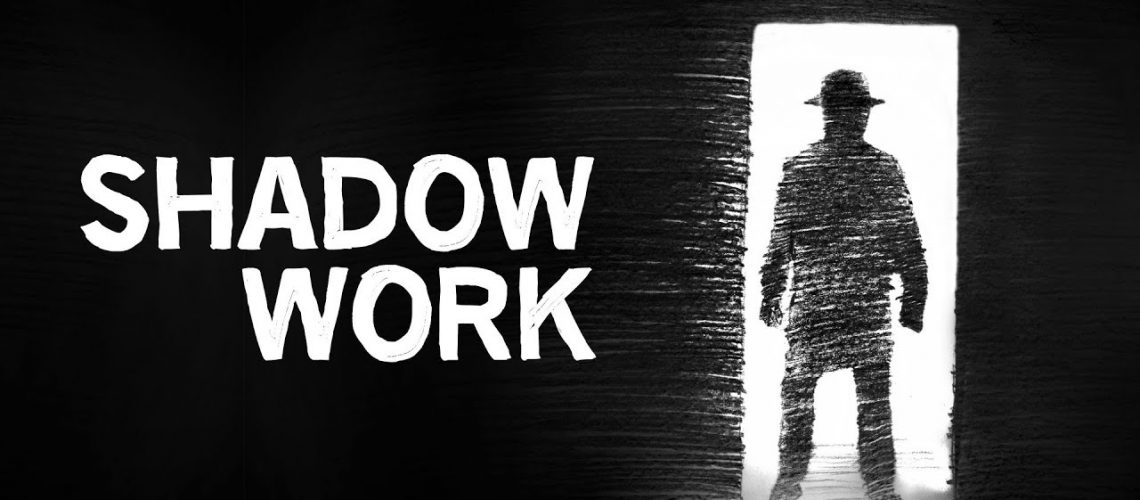According to Jung, part of self-realization is the integration of the Shadow into our personality. The process of integrating our ‘dark side’ is called Shadow Work.
Video by Einzelgänger & Diamond Net
Key Takeaways
"We have not understood yet that the discovery of the unconscious means an enormous spiritual task, which must be accomplished if we wish to preserve our civilization."
Human civilization consists of countless traditions, codes of conduct, and systems of ethics. Depending on what social group we belong, and what environment we grew up in, there’s always an ideology in regards to what’s preferable and what’s not.
Therefore, we develop a set of behaviors in order to fit the situations we find ourselves in. We create a fake persona that reflects how the world wants to see us. We consciously hide a part of our undesirable characteristics behind the masks we wear.
However, as swiss psychiatrist Carl Jung observed, there’s an unwanted part of ourselves that we are not conscious of. Jung called this the Shadow.
The Shadow is a result of the imbalance between who we want to be and who we truly are. The more we repress, the denser the Shadow becomes. And because we are unaware of what’s lurking in the dark, we’re at risk that it lashes out unexpectedly with all the consequences that this entails.
The process of integrating our ‘dark side’ is called Shadow Work.
In order to understand why the process of Shadow Work lends itself so well to these ends, we must first understand that Shadow Work is a subtractive process and not an additive process.
This means that it’s not about directly and actively adding unconscious aspects of our personality back into our conscious awareness.
In reality, it’s about subtracting the barriers to consciousness that are the root cause of why those aspects are repressed away in the first place.
Thus, in this metaphor, all the water that builds up in the reservoir of the dam is a representation of the parts of our psyche that end up unconscious to us and in the Shadow.
And if you do that, the water will naturally and effortlessly find its level and flow downstream. And that’s the goal of Shadow Work.
So, the key to Shadow Work is to find the mental and emotional barriers and dissolve them or let them go.
Before integration can take place, it’s essential to acknowledge the existence of our Shadow.
The question is: how does the unconscious manifest?
Symbolic language is prevalent in mythology. A myth is a story that preserves its meaning throughout different cultures and time periods because it uses universal aspects of existence: things like trees, animals, natural phenomena, the nurturing mother, the old wise man, or birth and death.
Thus, dream analysis is one of the tools that Jung applied, to identify the symbolic images that dreams produce.
And the practice of active imagination is a form of meditation, in which one engages in a dialogue with these images.
There are many reasons why we’d feel the need to get rid of these traits. But by repression, we cast them into the Shadow.
"It is absolutely essential always to have our consciousness well enough in hand to pay sufficient attention to our reality, to the Here and Now. Otherwise, we are in danger of being overrun by an unconscious which knows nothing of this human world of ours."
So, awareness is the first step in mediating between Shadow and consciousness. When we confront what lingers in the dark, we can identify and tear down the barriers that prevent it from integration.
As we are engaged in the process of Shadow Work, we must first understand that the state of entropy for our psyche is wholeness and total integration.
This means that there is already a constant psychological force pulling us back into a state of conscious integration as our natural set point.
And it is only the resistance against wholeness and integration that creates a barrier to reaching this state of entropy.
This is also why meditation is so effective as a consciousness-work practice, but that’s a topic for a different day.
How To Do Shadow Work
1. Thoughts
The thought-based barriers to consciousness are things like our self-concept (aka ego), our beliefs, our worldview, our ideals, and our judgments about ourselves and others.
Finding our motives is a great doorway into understanding why something is in the Shadow.
Now, in my opinion, the easiest thought-based barrier, to begin with, is to examine our judgments and aversions toward other people.
2. Emotions
The other place to look for barriers to integration is in the realm of emotions.
Owning our dark side isn’t a matter of adding but a matter of subtracting.
So, instead of actively bringing back unconscious aspects into our personalities, we aim for removing the blockages that resist the motions of entropy, so we embark on the natural flow towards wholeness.
This video is a product of a collaboration between Emerald from The Diamond Net and Einzelgänger. If you’re interested in more content about the Shadow, Jungian psychology, and many other related topics, I’d highly recommend you check out Emerald’s channel The Diamond net.

